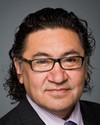Thank you for that question.
Jordan's principle definitely applies to first nations children living on or off reserve. We've worked quite hard, as I'm sure you're aware, to increase access for children to services and to fill gaps when we see gaps.
For the time being, Jordan's principle applies to kids, but I think we can think of it in a similar way, in terms of there being a gap and our wanting to close the gap. We're working very hard to improve the outcomes, for example, for first nations seniors living on reserve, so that health outcomes are similar to those for other Canadians.
In my mind, Jordan's principle is a useful way of looking at it—let's look to fill the gaps and reduce the gaps—but Jordan's principle per se applies to kids. We are, however, definitely working hard to look at the issue and to figure out what the potential solutions could be so that we can close the gap.



